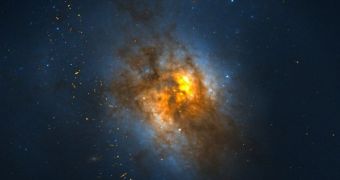Ever since the first lifeforms developed on our planet, their basic components were founded on a specific group of 20 molecules in a group called amino-acids. A particular set of combinations made life possible here, but it could be that different amino-acids did the same on other worlds, experts say.
The reason why these molecules are so important is because they are the building blocks of proteins, which in turn are absolutely essential for life as we know it. Some types of proteins got so specialized in underlying certain reactions inside organisms that they became enzymes.
What this means is that they now tend to act as if they are catalysts, rather than standard proteins. But the bottom line is that all of them are made up of a certain combination of these 20 amino-acids. However, experts say that hundreds of molecules in this class exist in nature.
This raises the interesting possibility that life on extrasolar planets may be based on a set of another 20 amino-acids, or 30, or 40. There really is no way of knowing, but the possibility is there, experts say.
Plus, when you couple this with the fact that other types of life may not rely on carbon at all, you get many more possibilities. “Life has been using a standard set of 20 amino acids to build proteins for more than 3 billion years,” NASA expert Stephen J. Freeland explains.
“It's becoming increasingly clear that many other amino acids were plausible candidates, and although there's been speculation and even assumptions about what life was doing, there's been very little in the way of testable hypotheses,” adds the expert.
Freeland holds an appointment as a research scientist with the NASA Astrobiology Institute at the University of Hawaii. He conducted the new study alongside colleague Gayle K. Philip, Space reports.
In an interview with Astrobiology Magazine, the team leader said that carbon, hydrogen, oxygen, and nitrogen are the primary building blocks of amino-acids. These chemicals can be found in varying concentrations on most planets in the Cosmos.
“Technically there is an infinite variety of amino acids. Within that infinity there are lots more than the 20 that were available [when life originated on Earth] as far as we can tell,” he said in the interview.
Freeland also proposed an interesting explanation for how this particular selection of amino-acids came to be favored before others. In the earliest days of life on Earth, a process of evolution may have selected against lifeforms based on other combinations of amino-acids.
However, this process took place because conditions on Earth demanded this particular set of molecules. On other worlds, this may not be the case, experts say.

 14 DAY TRIAL //
14 DAY TRIAL //